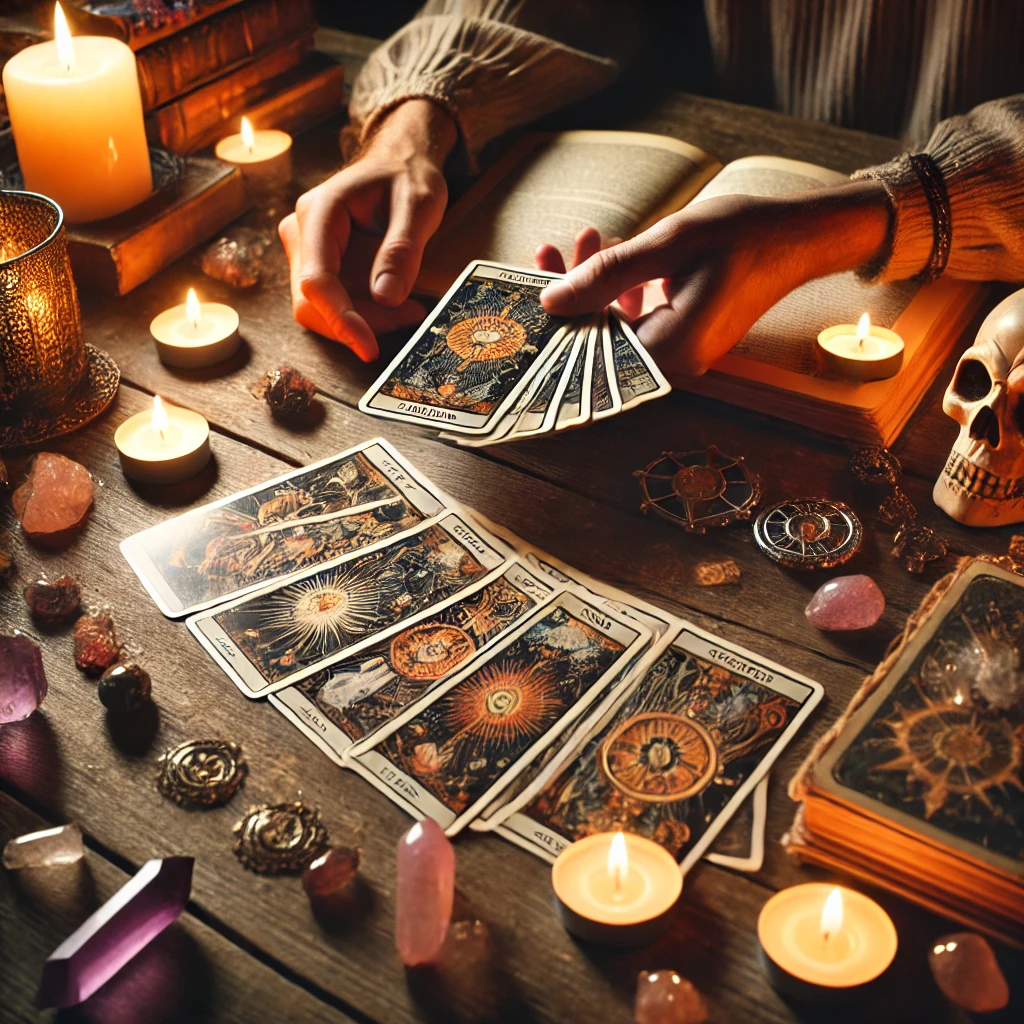Tarot Cards: A Beginner’s Guide
Tarot Cards: A Beginner’s Guide What Are Tarot Cards? A Tarot deck consists of 78 cards, divided into two main sections: Major Arcana (22 cards): These cards represent major life events, lessons, or spiritual themes. Examples include The Fool, The Lovers, and Death. Minor Arcana (56 cards): These cards deal with everyday events and challenges. They are divided into four suits (Cups, Wands, Swords, and Pentacles), similar to playing cards. Each card has unique symbolism and meaning, which can vary based on its position in a spread and whether it is drawn upright or reversed. A Brief History of Tarot The origins of Tarot cards are uncertain, but they are believed to have originated in the 15th century as playing cards in Europe. By the 18th century, they became associated with divination and esoteric knowledge, thanks to mystics and occultists. Today, Tarot is widely used for personal reflection, guidance, and even psychological insight. How Do Tarot Readings Work? A Tarot reading involves shuffling the deck, drawing cards, and interpreting their meanings. The process often follows these steps: Setting an Intention: Before drawing cards, focus on a question or a topic you need guidance on. Choosing a Spread: A spread is a layout of cards that determines how they will be interpreted. Common spreads include: One-Card Pull: A simple, daily insight. Three-Card Spread: Past, present, and future. Celtic Cross Spread: A detailed 10-card reading for deeper insight. Interpreting the Cards: Each card’s meaning depends on its position and whether it appears upright or reversed. Understanding Tarot Card Meanings Each card carries a unique meaning, but here are a few examples: The Fool: New beginnings, adventure, taking risks. The High Priestess: Intuition, wisdom, hidden knowledge. The Tower: Sudden change, upheaval, transformation. Ace of Cups: New emotional beginnings, love, creativity. Can Anyone Read Tarot? Yes! While some believe psychic ability is needed, anyone can learn Tarot with practice. The key is to trust your intuition and get familiar with the card meanings. Tips for Beginners Start with a Simple Deck: The Rider-Waite Tarot deck is the most popular and easiest to learn. Practice Regularly: Pull one card a day and reflect on its meaning. Keep a Journal: Write down your readings and personal interpretations. Trust Your Intuition: Over time, you’ll develop a personal connection with the cards. Conclusion Tarot cards are a powerful tool for self-reflection and guidance. Whether you use them for fun or deep insight, they can offer valuable wisdom. If you’re curious, grab a deck, start practicing, and enjoy the journey of Tarot reading! Make me Pure offers a range of addiction treatment options that are customized to meet your requirements, If you’re facing any addiction. We include numerous treatment choices to give you the relaxed chance at recovery and chancing a new way to live. Contact us now to get answers to any questions and explore your queries with one of our hypnosis specialists. Book your seats for professional hypnosis Contact us at 9859282828, 9854282828, 7687949494, 9599375436 Tags: Astrology Meditation past life regression Facebook-f Twitter Linkedin-in Pinterest Youtube




